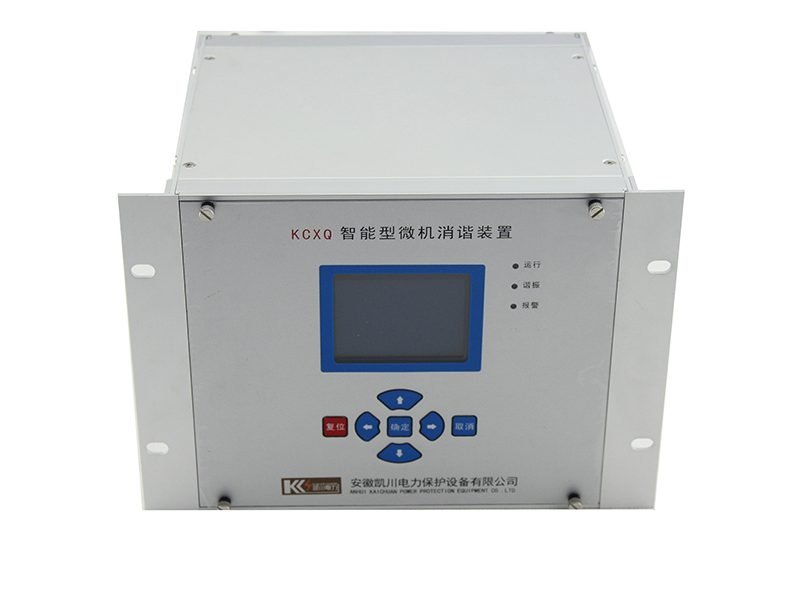Introduction
In the quest for cleaner and more efficient electrical power, researchers and engineers are constantly pushing boundaries to develop innovative technologies. One such advancement that has gained significant attention is the Micro Harmonic Elimination Device (MHED). This revolutionary device has the potential to tackle the persistent problem of harmonics in electrical systems. By eliminating or reducing harmonics, the MHED promises to improve power quality, increase energy efficiency, and enhance the lifespan of electrical equipment. In this blog, we will delve into the workings of the MHED, its benefits, and its potential applications across various industries.

Understanding Harmonics
Before delving into the Micro Harmonic Elimination Device, it is essential to grasp the concept of harmonics. In an electrical system, harmonics are unwanted electrical signals that result from non-linear loads. These loads include devices like power electronic converters, variable speed drives, and LED lighting, which introduce harmonic currents into the system. Harmonics can lead to numerous problems, including increased power losses, reduced equipment lifespan, electromagnetic interference, and decreased power quality.
Introducing the Micro Harmonic Elimination Device
The Micro Harmonic Elimination Device (MHED) is an advanced electronic device designed to suppress or eliminate harmonics in electrical systems. It achieves this by employing cutting-edge power electronics and control algorithms. The device continuously monitors the electrical system, detects harmonics, and generates counteractive signals to cancel out the unwanted harmonics. By injecting equal and opposite harmonics, the MHED effectively neutralizes the problematic signals, resulting in a cleaner and more sinusoidal waveform.
Benefits of the MHED
The Micro Harmonic Elimination Device offers several key benefits for electrical systems and end-users. Firstly, it significantly improves power quality by reducing harmonic distortion, thereby ensuring a stable and reliable power supply. This improvement translates into enhanced performance and lifespan for sensitive equipment such as motors, transformers, and power factor correction capacitors. Secondly, the MHED increases energy efficiency by reducing power losses caused by harmonic currents. By optimizing the power factor and reducing reactive power, the device helps to minimize electricity consumption, leading to lower energy bills and reduced environmental impact.
Applications of the MHED
The applications of the Micro Harmonic Elimination Device are vast and diverse. It finds utility in various industries such as manufacturing, renewable energy, data centers, healthcare facilities, and commercial buildings. In manufacturing plants, the MHED can eliminate harmonics generated by motor drives and other non-linear loads, ensuring smooth operation and minimal downtime. Renewable energy systems, including solar and wind power installations, benefit from the MHED by eliminating harmonics generated by power converters, thus improving energy generation efficiency.
Data centers, which rely heavily on reliable power supplies, can use the MHED to enhance power quality and protect sensitive IT equipment from potential damage caused by harmonics. Similarly, healthcare facilities, where medical devices and imaging equipment are critical, can ensure the highest level of precision and accuracy by implementing the MHED. Commercial buildings, with their numerous non-linear loads like elevators, HVAC systems, and lighting, can also leverage the MHED to mitigate harmonics and maintain a high-quality power supply.
Conclusion
The Micro Harmonic Elimination Device represents a significant leap forward in power quality management. By neutralizing harmonics and improving the sinusoidal waveform, the MHED offers a wide range of benefits, including enhanced power quality, increased energy efficiency, and prolonged equipment lifespan. As industries strive for cleaner and more efficient power systems, the MHED is poised to play a crucial role in shaping the future of electrical infrastructure. With its broad applicability and potential for widespread adoption, the MHED holds immense promise for a more sustainable and reliable electrical power ecosystem.
Looking ahead, further advancements in Micro Harmonic Elimination Device technology are anticipated. Researchers and engineers are continuously working to refine the device’s capabilities, making it more compact, efficient, and cost-effective. As the demand for cleaner energy and improved power quality continues to grow, the MHED is poised to become an integral component of modern electrical systems.
One area of ongoing research is the integration of MHEDs with smart grid technologies. Smart grids incorporate advanced monitoring and control systems that enable real-time data analysis and optimization of power distribution. By integrating MHEDs into smart grids, operators can proactively detect and mitigate harmonics, ensuring a stable and high-quality power supply to end-users. This integration can also facilitate better load management and demand response, further enhancing energy efficiency and grid stability.
Moreover, the application of MHEDs in electric vehicle (EV) charging infrastructure is gaining traction. EV charging stations often experience high harmonic distortion due to the charging process. By implementing MHEDs in these stations, harmonics can be effectively eliminated, minimizing power losses and improving the charging efficiency of EVs. This not only enhances the user experience but also contributes to the overall growth of the electric vehicle industry by addressing concerns related to power quality.
In addition to their technical benefits, MHEDs offer financial advantages to end-users. The increased energy efficiency resulting from reduced harmonic distortion translates into lower electricity bills and operational costs. The improved reliability and lifespan of equipment also lead to reduced maintenance and replacement expenses. These cost savings make the adoption of MHEDs an attractive investment for industries, businesses, and even residential applications.
In conclusion, the Micro Harmonic Elimination Device represents a breakthrough technology in the field of power quality management. By tackling the persistent problem of harmonics, this device offers a myriad of benefits, including enhanced power quality, increased energy efficiency, and prolonged equipment lifespan. Its broad applicability across industries, coupled with ongoing research and development efforts, paves the way for a future where cleaner, more sustainable, and reliable electrical power systems are the norm. As the demand for efficient and environmentally friendly power solutions continues to rise, the Micro Harmonic Elimination Device stands as a promising solution at the forefront of innovation.